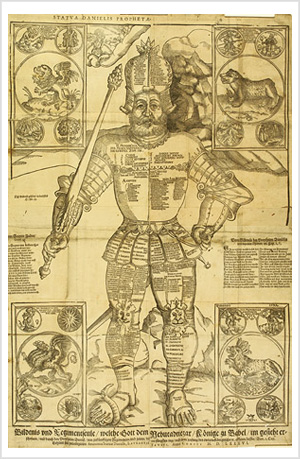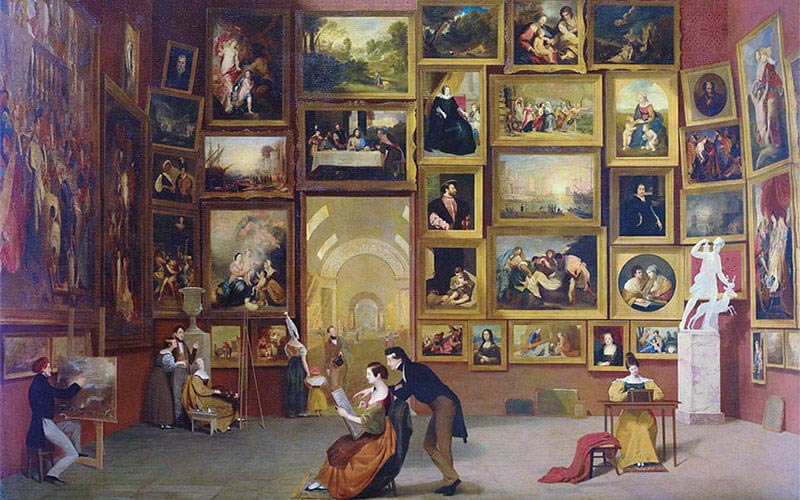People always talk about time in terms of space. Time is either long or short, and the past and present are either far away or close. We say time moves, and that it moves slowly or fast, just like objects.
Because all ideas of time are essentially abstract, this is very certainly unavoidable. We are uncomfortable with this, and we try to alleviate the aches of abstraction through both language and the things we build. Consider a clock with moving arms that measure the hours, minutes, and seconds against a constant backdrop of sixty dashes that resemble a ruler twisted into a circle.
A Mesmerizing history of Wall Art all the pervasiveness of our spatial metaphors for temporal experience, it’s no surprise that a chronographer has existed for a long time — that is, someone who is interested in graphing, or creating visual representations of, the passage of history. “How does history look like?” Anthony Grafton and Daniel Rosenberg ask in the first words of their illuminating and fascinating Cartographies of Time. “How do you keep track of time?”
Moreover, if you ignore the number of years in which the chronicler claims nothing happened, this is a rather basic account. It does, however, have a shape: it is the simplest form of a table, with two columns, the first of which contains dates and the second of which contains events. And the dates are always in the same order. It’s a start, though.

The History as Wall Art
left side of the page, and in parallel columns Eusebius noted key events in the histories of nineteen different nations, some of which were still active (the Romans), and some of which had long since passed away (the Greeks) (the Assyrians). This allowed Christians to see Biblical history in relation to pagan history, which must have had a mixed effect: on the one hand, it grounded the biblical characters and events in a known world — Jeremiah and Thales were contemporaries — but it also suggested that the Biblical story wasn’t the only one.
By any case, for almost a thousand years, A Mesmerizing history of Wall Art of all the Chronicle of Eusebius served as the primary paradigm for pictorial portrayal of history. However, there were other options. Cartographies of Time is extensively illustrated, and seeing the experimental range of the chronographers’ work is one of the many delights of reading it. Large scrolls from the Middle Ages depict trees, linked rings, medallion-like circles holding paintings of rulers’ faces joined by lines, and so on. One sixteenth-century researcher attempted to replicate a strange Biblical model: the statue mentioned in Daniel’s second chapter, with bodily parts composed of gold, silver, brass, iron, and clay, among other materials. The organs and extremities of Daniel’s statue are labeled with the names of kingdoms and rulers in a woodcut (right). Unfortunately, as a means of describing universal history, this model has significant drawbacks.
How it Begins actually
Most of these methods deal not only with the problem of complexity, but also with the issue of fidelity to the facts: if Daniel’s idol is too simple, more sophisticated models provide better accuracy to the facts at the sacrifice of readability and comprehensibility. Because complicated chronography demanded so much of readers, Rosenberg and Grafton try to claim that it at least had the effect of drawing people into the novels it was given in in a highly active way; nonetheless, this may be a type of special pleading. Frequently, the complexity is simply befuddling.
A Mesmerizing history of Wall Art according to Rosenberg and Grafton, these varied techniques began to converge on a particular model of depicting time about the middle of the eighteenth century — “middle”: another spatial metaphor — around the middle of the eighteenth century. The major figure is Joseph Priestley, a famous dissenting priest and scientist who was inspired by Thomas Jefferys, an English geographer and engraver who created an immense Chart of Universal History in 1753. While Priestley admired Jefferys chart, which crammed thousands of words into a colorized table, he thought Jefferys had made a mistake by failing to maintain uniformity of scale: the intervals in his rows of dates, which run vertically down the page, range from one hundred to five hundred years.
Horizontal Impression
Clerkly fixed the problem, beginning with his Chart of Biography (1765). The dates here run at unvarying intervals, much like the minutes and seconds on a clock, and they run horizontally to give the impression of time advancing rightwards, or in the direction of reading.
- Historians, Antiquaries, and Lawyers;
- Orators and Critics;
- Artists and Poets;
- Mathematicians and Physicians;
- Divines and Metaphysicians;
- Statesmen and Warriors;
- Historians, Antiquaries, and Lawyers;
- Orators and Critics;
- Artists and Poets;
- Mathematicians and Physicians;
- Divines and Metaphysicians;
- Statesmen and Warriors;
Statesmen and Warriors Each name on the chart is accompanied by a line representing the person’s life expectancy.
“It is a strange kind of pleasure we obtain, from such a view as this chart gives, of a great man, such as Sir Isaac Newton, sat, as it were, in the circle of his friends and distinguished contemporaries,” Priestley noted. We can see right away who he was capable of conversing with.” (The right side of Priestley’s chart, devoted to recent history, is highly packed, whilst the left side is rather vacant.) Of course, this is largely due to historical ignorance — we know far less about Archimedes’ associates than we do about Newton’s — but the chart’s look helps to support a powerful narrative of intellectual growth.)
A Mesmerizing history of Wall Art pastorally was so taken with this method of depicting time that he went on to modify and amend Jeffery’s chart in his 1769 New Chart of History (left). Sacerdotal runs his dates across the page from left to right here, too, and Rosenberg and Grafton point out that he kept the same scale he used in his biographical chart “so that data from one might be lifted easily and transported to the other.” Each row of the table represents a territory, but they appear in an odd arrangement, with European nations at the bottom and the rest of the world at the top — implying that the Roman Empire, for example, is at the bottom of the chart. It’s huge: a colossal colossus. (Unfortunately, Rosenberg and Grafton rarely specify the size of the documents they copy.)
French scholar contemporary with Priestley
Despite the fact that Cartographers of Time is a large book (about 8.5 by 10.5 inches when closed), almost none of the charts described in it are printed at anything close to their actual size, and the majority of them are nearly or completely unreadable on the book’s pages. I was only able to get a decent look at some of them by removing my spectacles — I am nearsighted — and bringing my eye very close to the round magnifying lens that came with my compact copy of the Oxford English Dictionary, rather than the page itself. A Mesmerizing history of Wall Art even it for someone looking at the original, finding out how to view these charts properly would be difficult. When you get too near to the details to notice them, you lose sight of the general pattern; when you get too far away to see the pattern, you lose sight of the details.
Jacques Barbeu-Dubourg, a French scholar contemporaneous with Priestley, created the Chronographie universelle in 1753, which consists of a scroll that fits neatly into a wooden case and a mechanism that rolls the timeline forward or backward, similar to how we “scroll” on a computer screen, but horizontally. The timeline is inscribed on a fifty-four-foot-long sheet of paper that spans from the Construction to the date of its own creation. (One of these devices is owned by Princeton University and is still operational.) Barbeu-Dubourg chose to give up the big picture in favor of the minutiae, but Priestley’s wall chart provided for a constant view of the whole.
Russian Campaign
As Rosenberg and Grafton’s interesting story progresses to the present, we see shockingly few true developments and, at least to my mind, few compelling images. (There is one exception: Alfred H. Barr, Jr.’s depiction showing the lines of influence that connect Cubism and modern abstract painting to their influences and other related art forms.) Few modern examples represent a significant improvement above Priestley’s tabular charts, and none of them include as much information in as little area as Minard’s map.
Data visualizations on computers may be opening up new avenues for visualizing concepts. For example, Debate graph employs a “mind map” model, which consists of a graph of linked ideas, to connect debated topics and reveal the various positions taken; this allows viewers to zoom in on specific debates or zoom out to see them in relation to other debates, all of which is made possible by the addition of motion. Cartographies of Time’s fixed graphics of charts and tables may have reached the natural limit of their informative and explanatory value.
Discontinuation Words:
Most impressive amazing invention in building decorating that gave color and a sense of breath to the white colorless walls that were merely structural elements. The knowledge provided was one of the best descriptors for me when it came to mural paintings. The contents of the decorating paintings, to be more explicit, were crucial words in the riddle of our origin history. They were just provided details, but this was not the case for the researchers, who had years of research covered in just a few minutes by every single detail in each fresco or mural. It’s inspiring to witness murals that are more than just paintings; they’re full stories with lessons to teach or passages to pass through. Finally, the number of people who visited museums, churches, or old palaces that are now open to the public to see these murals, mosaics, and frescoes that have been saved to this day is living proof that art is historical, and that even in these days when people’s stocks and ideals have been lost and destroyed, people’s interest in art has not waned.




